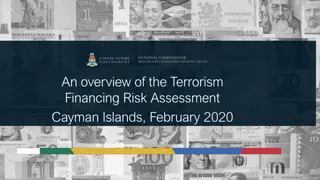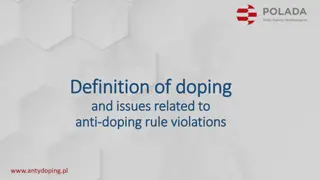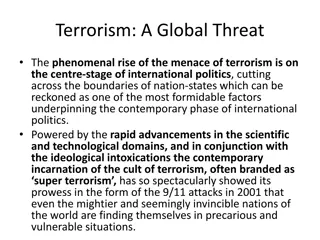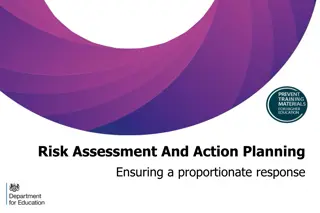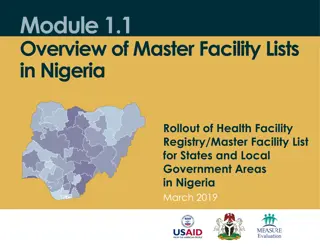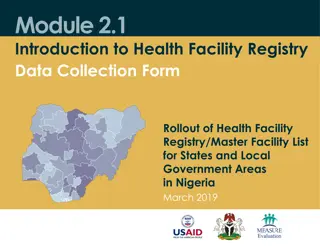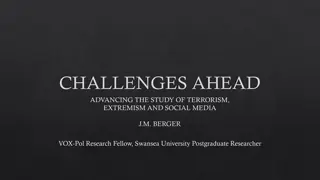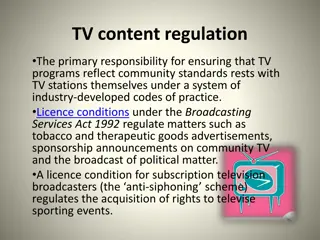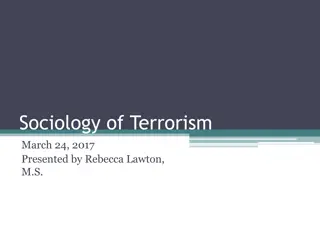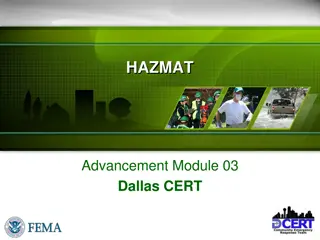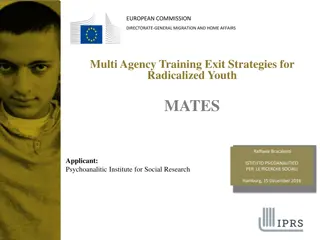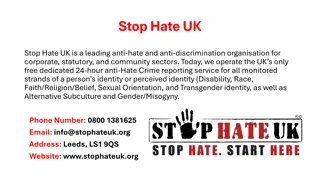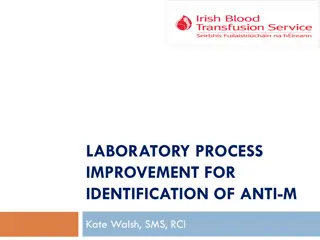Understanding Chemical Facility Anti-Terrorism Standards (CFATS)
Congress passed the Department of Homeland Security Act in 2007, granting DHS the authority to regulate high-risk chemical facilities and develop security regulations. CFATS, effective since 2007, requires high-risk facilities to enhance security. The regulations empower DHS to audit, inspect, and enforce compliance with penalties. Facilities must submit Top-Screen information on Chemicals of Interest (COI) within specific thresholds. CFATS Act of 2014 reauthorized the program.
Download Presentation

Please find below an Image/Link to download the presentation.
The content on the website is provided AS IS for your information and personal use only. It may not be sold, licensed, or shared on other websites without obtaining consent from the author. Download presentation by click this link. If you encounter any issues during the download, it is possible that the publisher has removed the file from their server.
E N D
Presentation Transcript
Chemical Facility Anti- terrorism Standards ((CFATS) 1
Background In late 2006, Congress passed the Department of Homeland Security Act of 2007. In addition to providing money for the Department of Homeland Security (DHS), the law gives DHS the authority to regulate the nation s highest risk chemical facilities and directs DHS to develop chemical facility security regulations. 2
DHS authority The regulations give DHS the authority to audit and inspect high-risk facilities to enforce compliance with CFATS. DHS has the authority to impose civil penalties of up to $25,000 per day and to shut down facilities that fail to comply with the regulations. 3
DHS published the regulations (6 CFR part 27) on April 9, 2007. Known as CFATS, the regulations took effect on June 8, 2007 and require high-risk chemical facilities to enhance security and establish new procedures for protecting chemical facility security information. Whether a facility is high risk is a threshold question that DHS determines on a facility-by-facility basis. Generally, the type and amount of chemicals that a facility possesses determine whether, and to what extent, a facility is subject to this Regulation. 4
On December 18, 2014, the President Obama signed into law the Protecting and Securing Chemical Facilities from Terrorist Attacks Act of 2014 (the CFATS Act of 2014), which recodifies and reauthorizes the CFATS program for four years. 5
The Process CFATS requires facilities that possess any of the 322 chemicals at, or above, the threshold levels identified in Appendix A, Chemicals of Interest (COI), to submit facility and facility-related information to DHS via a secure web portal. This process is known as the Top-Screen. Top Screens must be submitted within 60 days of discovery of COI at, or above, stated threshold quantities. 6
The Process After reviewing the Top-Screen and other information, DHS notifies each facility by letter. Facilities that do not present a high level of security risk are not subject to CFATS. These facilities have no further regulatory obligation though a material modification at the facility may prompt further inquiry. However, facilities that do present a high level of security risk are subject to additional review and must complete a Security Vulnerability Assessment (SVA). 7
The Process Facilities that are required to complete a SVA must submit the completed SVA back to DHS within the 90 day timeframe as directed by DHS. There are four risk-based tiers ranging from high (Tier 1) to low (Tier 4). Based on your SVA, DHS will perform a final threat analysis to determine your facility's final tier level. 8
The Process For facilities that are determined to be high-risk, DHS requires each of the facilities to develop and implement a Site Security Plan (SSP) or an Alternate Security Plan (ASP), using the DHS Risk Based Performance Standards (RBPS). Plans must be submitted within 120 days of receipt of final tier letter. Any information that is developed and/or submitted to DHS pursuant to CFATS is protected under the Chemical-terrorism Vulnerability Information (CVI) law from inappropriate public disclosure. 9
The primary CFATS security issue for colleges and universities is theft/diversion. DHS gives colleges and universities flexibility in how they define themselves Report by building Report by campus SSP solely focused on the areas where the COI are located 10
Top 10 Regulated COI from tiered colleges and universities 1. 2. 3. 4. 5. 6. 7. 8. 9. 10. Chloroacetyl chloride Nitric Acid Titanium tetrachloride Nitric Oxide Trichlorosilane Phosphorus pentasulfide Boron Tribromide Sodium cyanide Propane Potassium cyanide 11
What Are Your Responsibilities? Security is like safety. We all have a part. Lock your labs when unattended! Submit yearly chemical inventory. Submit COI changes within 30 days of receipt. Be aware of your surroundings. Know what belongs in your areas. Know if you have COI. Don t assume that someone belongs. If you don t recognize them, ask them who they are and if you can be of assistance. Report suspicious people and activities to your supervisor and CSU Police. 12
Important Web Sites EHS: http://www.csuohio.edu/ehs/environmental- health-and-safety DHS: www.dhs.gov DHS Chemical Security: http://www.dhs.gov/critical-infrastructure- chemical-security 13







